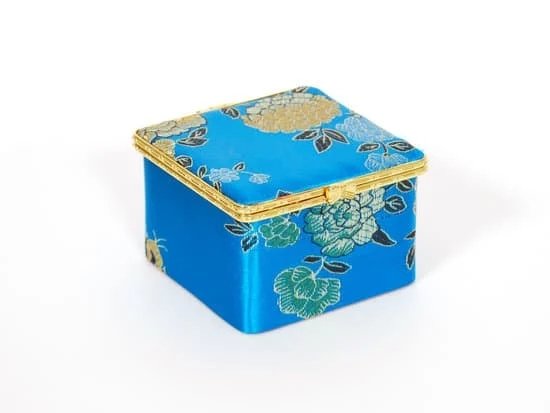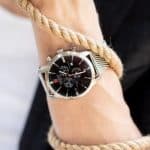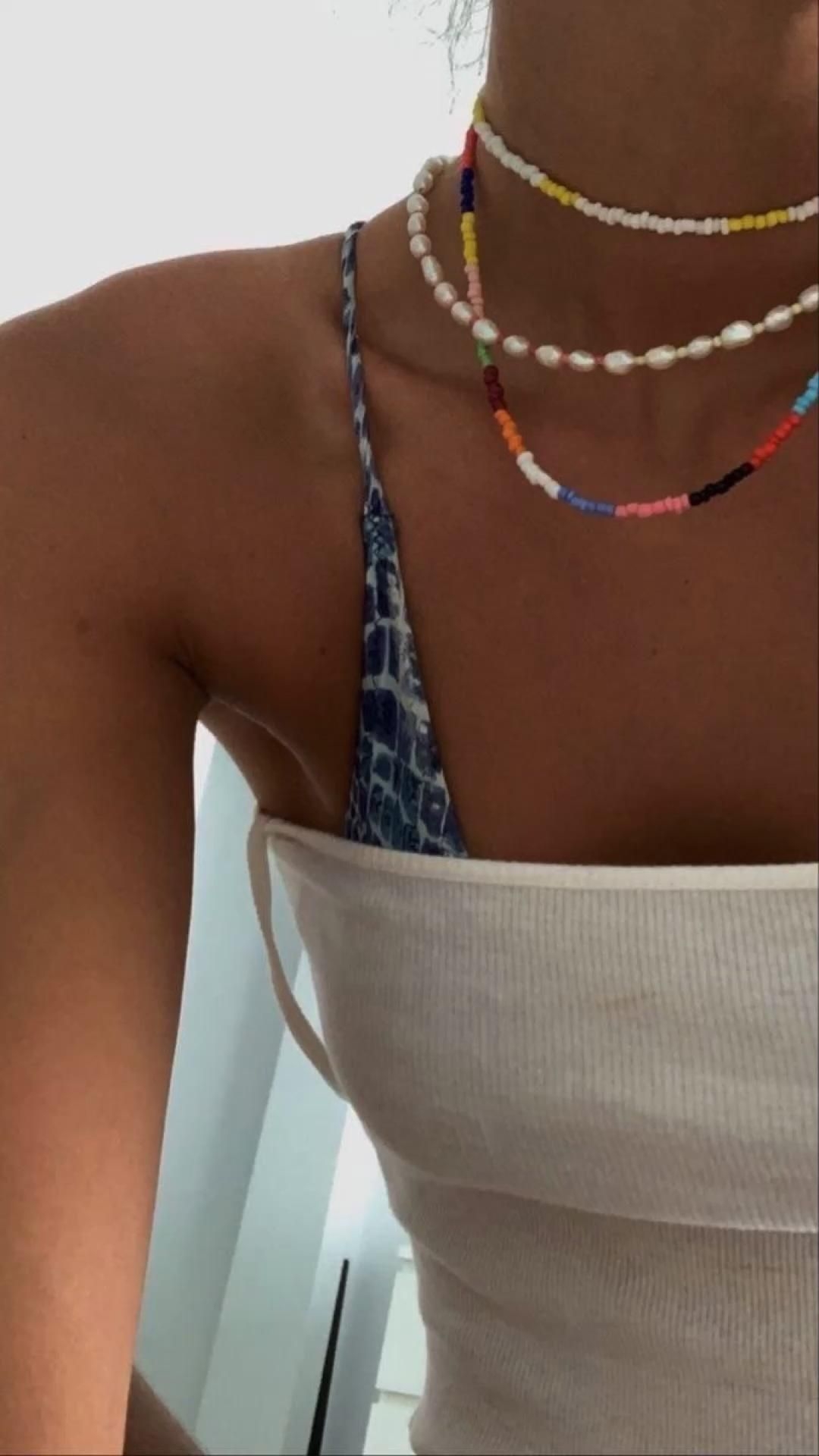How to weave beads for jewelry is a skill and art form that has been practiced for centuries, with its origins dating back to ancient civilizations. In today’s world, bead weaving continues to be a popular technique for creating stunning and intricate jewelry pieces. This introductory section will delve into the significance of bead weaving in the world of accessories, highlighting its beauty and versatility as a craft.
Bead weaving involves the meticulous process of threading tiny beads together to create beautiful patterns, textures, and designs. It offers individuals the opportunity to express their creativity and design unique jewelry pieces that are truly one-of-a-kind. Whether you’re a beginner or an experienced crafter, learning how to weave beads for jewelry opens up a world of possibilities for creating personalized accessories that reflect your personal style and artistic vision.
In this comprehensive guide, we will explore the essential tools and materials needed for bead weaving, as well as basic techniques such as the peyote stitch, brick stitch, and loom weaving. Additionally, we will provide tips on selecting the right beads for your project, inspiring design ideas, troubleshooting common issues that may arise during the bead weaving process, and ways to add finishing touches and embellishments to your creations.
Whether you’re looking to embark on a new hobby or enhance your existing skills in jewelry making, this article will equip you with the knowledge and resources needed to start your bead weaving journey.
Essential Tools and Materials
Bead weaving is a captivating craft that involves weaving beads together to create intricate patterns and designs for jewelry. To get started with bead weaving, it’s essential to have the right tools and materials at your disposal. Here is a comprehensive list of all the necessary tools and materials needed for bead weaving:
1. Beads: Beads are the main component of any bead weaving project. There are various types of beads to choose from, including seed beads, glass beads, crystal beads, and gemstone beads. It’s important to consider the size, shape, color, and material of the beads when selecting them for your project.
2. Threads: Choosing the right thread for your bead weaving project is crucial for achieving a durable and beautiful result. Nylon thread or beading thread is commonly used for bead weaving due to its strength and flexibility. It’s available in various thicknesses and colors to suit different types of beads and designs.
3. Needles: Specialized beading needles are designed specifically for bead weaving projects. They come in different sizes to accommodate various bead sizes and threading techniques.
4. Bead Loom: A loom is a useful tool for creating larger pieces of beadwork such as bracelets or belts. It provides a stable base for weaving the beads together in an organized manner.
5. Scissors: Sharp scissors are essential for cutting threads during the bead weaving process.
6. Bead Mat: A soft surface such as a bead mat or towel can help prevent beads from rolling away while you work on your project.
Having these essential tools and materials will set you up for success in your bead weaving endeavors, allowing you to create stunning jewelry pieces with precision and creativity.
| Tools | Materials |
|---|---|
| Beads | Threads |
| Needles | Bead Loom |
| Scissors | Bead Mat |
Basic Bead Weaving Techniques
Bead weaving is a beautiful and intricate art form that allows you to create stunning jewelry pieces using tiny beads. One of the most important aspects of bead weaving is mastering the foundational techniques such as the peyote stitch, brick stitch, and loom weaving.
These techniques form the basis of many bead weaving projects and are essential for creating beautiful and intricate designs. In this section, we will dive into the step-by-step instructions for each of these techniques, providing clear illustrations to guide you through the process.
The peyote stitch is one of the most popular bead weaving techniques and is characterized by its staggered, off-set appearance. To begin a peyote stitch project, you will need an even number of beads to start your first row. Subsequent rows are created by stitching beads in a zigzag pattern, with each bead fitting into the space created by the previous row. This creates a smooth, flat surface that can be used to create intricate patterns and designs.
Another foundational bead weaving technique is the brick stitch, which is commonly used to create shaped designs such as triangles or squares within beadwork. The brick stitch involves stacking beads on top of each other in a staggered pattern, much like bricks in a wall. By adding or subtracting beads at specific intervals, you can create different shapes and forms within your beadwork.
Loom weaving is yet another essential technique in bead weaving and involves using a specialized bead loom to create flat-beaded designs. The loom holds the warp threads in place while you weave the weft threads (the threads that hold the beads) over and under the warp threads to create your design. Loom weaving allows for precise patterns and uniformity in your beadwork.
Mastering these foundational techniques is essential for anyone interested in learning how to weave beads for jewelry. With patience and practice, you can develop your skills and create beautiful, one-of-a-kind pieces that showcase your unique style and creativity.
| Bead Weaving Technique | Description |
|---|---|
| Peyote Stitch | A popular technique characterized by its staggered appearance; ideal for creating intricate patterns. |
| Brick Stitch | Commonly used for creating shaped designs; involves stacking beads like bricks in a wall. |
| Loom Weaving | Uses a specialized loom to create flat-beaded designs with precise patterns. |
Choosing the Right Beads
When it comes to bead weaving, selecting the right beads is crucial for the success of your project. The size, shape, color, and material of the beads will have a significant impact on the overall look and feel of your finished jewelry piece. Here are some tips for choosing the ideal beads for your bead weaving project.
Considerations for Size
The size of the beads you choose will determine the intricacy and level of detail in your bead weaving design. Larger beads can create bold and eye-catching statements, while smaller beads are perfect for delicate and intricate patterns. Consider the scale of your design and whether you want a statement piece or something more subtle when selecting bead sizes.
Shape and Material
The shape and material of the beads also play a vital role in bead weaving. Different materials like glass, gemstone, metal, wood, or plastic can give your jewelry piece a unique texture and aesthetic appeal. Additionally, consider the shape of the beads – round, oval, square, or irregular shapes – to complement your desired design.
Color Coordination
Color coordination is another important factor when choosing beads for your bead weaving project. Think about the color scheme you want to achieve and how different bead colors will work together within your design. Whether you’re going for a monochromatic look or a vibrant mix of hues, carefully consider how each color contributes to the overall visual impact of your piece.
In summary, understanding how to weave beads for jewelry starts with making informed decisions about which type of beads to use. By considering size, shape, material, and color coordination when selecting beads for your project, you can ensure that your finished piece achieves the desired look and feel.
Design and Pattern Ideas
When it comes to bead weaving for jewelry, the design and pattern ideas are endless. Whether you prefer geometric patterns, floral motifs, or abstract designs, there is something for everyone in the world of bead weaving. These design and pattern ideas not only add beauty to your jewelry pieces but also allow you to express your creativity and individual style.
Geometric Patterns
Geometric patterns are a popular choice for bead weaving projects. From simple stripes and chevron designs to intricate tessellations and mosaics, geometric patterns offer a modern and stylish look to your jewelry. By using different colors and shapes of beads, you can create captivating geometric patterns that will make your jewelry stand out.
Floral Motifs
For those who appreciate the beauty of nature, floral motifs are an excellent option for bead weaving. You can create delicate flower petals, intricate leaves, or vibrant blooms using various bead sizes and colors. Floral motifs add a touch of elegance and femininity to your jewelry pieces, making them perfect for both casual and formal occasions.
Abstract Designs
If you have a flair for the unconventional, abstract designs offer a creative outlet for your bead weaving projects. Abstract patterns allow you to experiment with asymmetrical shapes, irregular lines, and unique combinations of beads to create visually stunning jewelry pieces that push the boundaries of traditional designs.
No matter what design or pattern idea you choose for your bead weaving project, it’s essential to consider factors such as color coordination, balance, and symmetry to achieve a harmonious look. With the right inspiration and visual references, you can take your bead weaving skills to the next level by incorporating captivating designs into your jewelry creations.
Troubleshooting Common Issues
Bead weaving for jewelry making can be a fulfilling and rewarding craft, but like any creative endeavor, it comes with its fair share of challenges. Whether you’re just starting out or have some experience with bead weaving, encountering common issues such as tangled threads, uneven tension, or misaligned beads is almost inevitable. However, these obstacles can be overcome with the right techniques and problem-solving skills.
Here are some common bead weaving issues and solutions to help you navigate through them:
1. Tangled threads: Tangled threads can be frustrating and time-consuming to untangle, but there are ways to prevent this issue. One effective solution is to use a thread conditioner or wax to keep your thread smooth and tangle-free. Additionally, be mindful of how you handle your thread while weaving to minimize the chances of tangling.
2. Uneven tension: Achieving consistent tension in your bead weaving is crucial for a polished and professional-looking result. To address uneven tension, try using a light touch when pulling the thread through the beads and maintain a steady rhythm while weaving. Practice and patience are key in mastering this technique.
3. Misaligned beads: Sometimes beads may shift or become misaligned as you weave, disrupting the pattern or design. To prevent this issue, make sure to secure each bead tightly in place as you progress with your project. Additionally, periodically check for alignment as you work to catch any misalignments early on.
By understanding these common problems that may arise during the bead weaving process and implementing these solutions, you can navigate through potential challenges with greater ease and confidence. Patience and practice are essential in improving your bead weaving skills and creating beautiful jewelry pieces.
Finishing and Embellishments
Once you have completed the intricate process of weaving beads for your jewelry project, it’s essential to finish off your creation with finesse. Adding clasps, connectors, and embellishments like charms and pendants can truly elevate your piece and give it a polished, professional look. Here are some different ways to finish off a bead weaving project, along with tips for achieving that perfect final touch:
1. Clasps and connectors: Adding a clasp is essential for turning your bead weaving into wearable jewelry. There are various types of clasps to choose from, including lobster clasps, toggle clasps, and magnetic clasps.
Consider the size and weight of your finished piece when selecting a clasp to ensure that it is both secure and aesthetically pleasing. Connectors such as jump rings or split rings can be used to attach the clasp to the ends of your bead weaving.
2. Embellishments like charms and pendants: To add an extra touch of personality to your bead weaving project, consider incorporating charms or pendants into your design. From dainty floral charms to striking gemstone pendants, there are countless options for embellishing your creation. Make sure to consider the overall aesthetic of your piece when selecting embellishments, ensuring that they complement the style and colors of the beads you have used.
3. Achieving a professional-looking result: Pay attention to detail when adding finishing touches to your bead weaving project. Use pliers to securely fasten clasps and connectors in place, ensuring that they are tightly closed for durability.
When adding charms or pendants, take time to position them on your piece in a way that enhances its overall design. Additionally, consider using findings such as crimp beads or wire guardians to protect the threads where they meet the clasps or connectors.
These finishing touches can truly transform your bead weaving project into a stunning piece of jewelry that you will be proud to wear or gift. With careful selection and precise application of clasps, connectors, and embellishments, you can achieve a professional-looking result that showcases the craftsmanship and creativity behind your bead weaving artistry.
Resources for Further Learning
In conclusion, bead weaving is a fascinating and intricate art form that allows individuals to create stunning and unique pieces of jewelry. By mastering the essential tools, materials, and techniques outlined in this article, anyone can learn how to weave beads for jewelry. Whether it’s the peyote stitch, brick stitch, or loom weaving, there are numerous ways to experiment with different designs and patterns to create beautiful accessories.
When it comes to choosing the right beads for your projects, consider factors such as size, shape, color, and material to achieve the desired aesthetic. Additionally, troubleshooting common issues such as tangled threads or misaligned beads will help ensure a smooth and enjoyable bead weaving experience. With practice and dedication, individuals can elevate their bead weaving skills and produce professional-looking results for their jewelry pieces.
For those interested in delving deeper into the art of bead weaving for jewelry, there are a plethora of resources available. From books and online tutorials to bead weaving communities, there is no shortage of opportunities for further learning and inspiration. By immersing oneself in these resources and engaging with fellow enthusiasts, individuals can continue honing their craft and exploring new possibilities within the world of bead weaving for jewelry.
Frequently Asked Questions
Can You Weave Beads Without a Loom?
Yes, it is possible to weave beads without a loom. One popular technique is called “off-loom bead weaving,” where beads are woven together using a needle and thread. This technique allows for more flexibility and creativity in the design.
Is Bead Weaving Hard?
Bead weaving can be challenging for beginners, as it requires patience and precision. The process of weaving small beads together can be time-consuming and intricate, but with practice and the right techniques, it becomes easier over time.
How Do You Weave Beads Into Fabric?
Weaving beads into fabric involves sewing them onto the fabric using a needle and thread. The process typically involves creating a design on the fabric by stitching individual beads in place, often following a pattern or sketch for guidance. This technique can add beautiful embellishments to clothing, accessories, and home decor items.

Welcome to my jewelry blog! My name is Sarah and I am the owner of this blog.
I love making jewelry and sharing my creations with others.
So whether you’re someone who loves wearing jewelry yourself or simply enjoys learning about it, be sure to check out my blog for insightful posts on everything related to this exciting topic!





